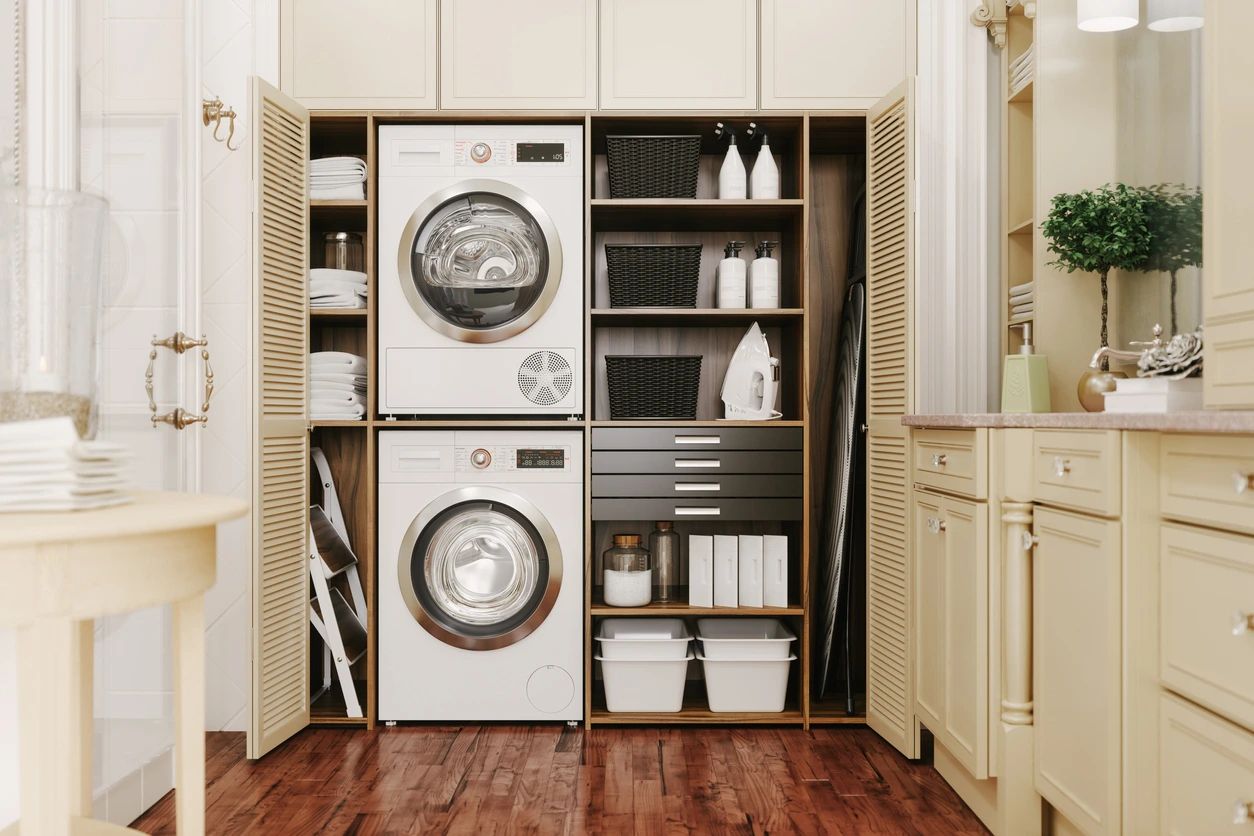

Articles
How Tall Are Stackable Washer And Dryer
Modified: February 23, 2024
Discover the ideal height of stackable washer and dryer units in this informative article. Find out the best options for your laundry room!
(Many of the links in this article redirect to a specific reviewed product. Your purchase of these products through affiliate links helps to generate commission for Storables.com, at no extra cost. Learn more)
Introduction
Are you in need of a space-saving laundry solution for your home? Look no further than the stackable washer and dryer. This ingenious combo offers the convenience of a full-size washer and dryer while taking up minimal floor space. Whether you live in a small apartment, have limited laundry area, or simply want to optimize your laundry room, stackable washer and dryers are a popular choice.
In this article, we will explore the world of stackable washer and dryers and provide you with all the information you need to know. From the benefits and standard height to different sizes and installation requirements, we’ve got you covered. So, let’s dive in!
Key Takeaways:
- Stackable washer and dryers offer space-saving convenience, energy efficiency, and improved aesthetics, making them a popular choice for modern households seeking a compact and efficient laundry solution.
- When considering stackable washer and dryers, it’s crucial to measure the space accurately, follow installation requirements, and consider factors such as height, width, and ventilation to ensure a seamless and successful setup.
Read more: How Tall Are Stackable Washer And Dryers
Benefits of Stackable Washer and Dryer
Stackable washer and dryers offer numerous advantages that make them the go-to choice for many homeowners. Here are some key benefits:
- Space-saving: The most obvious advantage of a stackable washer and dryer is that they save space. By vertically stacking the units, you can free up valuable floor space in your laundry area. This is especially beneficial for those living in apartments or houses with limited square footage.
- Convenience: With a stackable washer and dryer, you can enjoy the convenience of having both appliances in one compact unit. No more running back and forth between the washer and dryer; you can simply load the clothes, start the cycle, and let it do its magic.
- Versatility: Stackable washer and dryers come in a variety of sizes, making them suitable for different households. Whether you need a full-size unit for your family or a compact one for your apartment, there’s a stackable option to fit your needs.
- Energy-efficient: Many stackable washer and dryers are designed with energy-efficient features, such as water-saving options and sensor drying, which can help reduce your utility bills. Additionally, by using one unit instead of two separate appliances, you’ll be using less energy overall.
- Improved aesthetics: A stackable washer and dryer can enhance the overall appearance of your laundry area. With their sleek design and compact size, they create a streamlined and organized look, giving your space a modern and tidy feel.
- Easy installation: Installing a stackable washer and dryer is relatively simple compared to traditional washer and dryer setups. Many manufacturers provide user-friendly installation instructions, and some even offer stackable kits to ensure a secure and stable setup.
Overall, a stackable washer and dryer offer convenience, versatility, and improved aesthetics while saving valuable space in your home. It’s no wonder why they have become a popular choice for modern households.
Standard Height of Stackable Washer and Dryer
When considering a stackable washer and dryer, it’s essential to know the standard height measurements to ensure a proper fit in your laundry area. The exact measurements may vary depending on the manufacturer and model, but here are the general guidelines:
The standard height for a stackable washer and dryer is approximately 76 to 80 inches. This measurement includes both the washer and dryer units stacked on top of each other. However, keep in mind that the height may differ based on factors such as adjustable feet, additional pedestals, or other accessories.
The height of the individual washer and dryer units may also vary. Typically, a standard full-size washer is around 36 inches high, while a full-size dryer is approximately 43 to 45 inches high. These measurements include the main body of the appliance and do not include any additional features or controls.
It’s important to ensure that the space you have available in your laundry area can accommodate the height of the stackable washer and dryer. Measure the distance from the floor to the top of the area where you plan to install the units to ensure it meets the required height specifications.
If you have any overhead cabinets or shelves above the laundry area, make sure to measure the distance between the top of the stacked washer and dryer to the bottom of the cabinets or shelves. This will ensure there is enough clearance for proper operation and avoid any potential damage.
Keep in mind that these are general guidelines, and it’s always recommended to consult the specific manufacturer’s specifications for the stackable washer and dryer model you are considering. This will ensure you have accurate measurements and prevent any installation issues.
By knowing the standard height of a stackable washer and dryer, you can confidently select the right unit for your space and ensure a seamless installation process.
Compact and Apartment-Sized Stackable Washer and Dryer
For those living in apartments or homes with limited space, a compact or apartment-sized stackable washer and dryer is the perfect solution. These units are specifically designed to fit in smaller laundry areas while still providing efficient performance. Here’s what you need to know about compact and apartment-sized stackable washer and dryer:
Size: Compact stackable washer and dryers are typically smaller in dimensions compared to standard full-size units. The exact size may vary depending on the manufacturer, but they are generally around 24 inches wide, 24 inches deep, and 33 to 36 inches tall. These compact dimensions make them perfect for small laundry closets or tight spaces.
Capacity: While compact stackable washer and dryers are smaller in size, they still offer decent capacity for laundry loads. The washing machine’s capacity can range from 2.0 to 2.5 cubic feet, while the dryer typically has a capacity of around 4.0 to 4.5 cubic feet. This capacity is suitable for small to medium-sized households.
Features: Compact and apartment-sized stackable washer and dryers come equipped with many features similar to their larger counterparts. They offer various wash and dry cycles, temperature settings, and options for different fabric types. Some models even have advanced features like steam wash or sensor drying for enhanced performance.
Venting Options: When selecting a compact stackable washer and dryer, it’s important to consider the venting options. Some models offer both vented and ventless options, allowing you to choose based on your specific needs and laundry area setup. Vented dryers require a ventilation system to expel the hot air, while ventless dryers use condensation or heat pump technology to eliminate the need for external venting.
Installation: Installing a compact stackable washer and dryer is typically straightforward. Some models come with stackable kits to ensure a secure and stable setup. However, it’s essential to follow the manufacturer’s installation instructions carefully to ensure proper installation and avoid any potential issues.
Considerations: Before purchasing a compact stackable washer and dryer, consider your laundry needs and the space available. Assess the amount of laundry you typically do and ensure the capacity of the units meets your requirements. Additionally, measure the available area in your laundry space to ensure it can accommodate the dimensions of the compact stackable units.
By opting for a compact or apartment-sized stackable washer and dryer, you can enjoy the convenience of a laundry solution that fits perfectly in small spaces without compromising on performance and functionality.
When measuring the height of a stackable washer and dryer, be sure to account for any adjustable legs or leveling feet. These can add a few inches to the overall height and may impact the fit in your space.
Front-Loading vs. Top-Loading Stackable Washer and Dryer
When it comes to stackable washer and dryers, there are two main types to choose from: front-loading and top-loading. Each has its own set of advantages and considerations. Let’s take a closer look at the differences between front-loading and top-loading stackable washer and dryer:
Design:
- Front-loading: Front-loading stackable washers and dryers have a door on the front of the unit that opens horizontally. This design allows for a sleek and modern appearance and makes it easier to load and unload laundry without bending over.
- Top-loading: Top-loading stackable washers and dryers have a lid on the top of the unit that opens vertically. This design is more traditional and familiar to many people. It can also be more convenient if you want to add or remove laundry during the wash cycle.
Capacity:
- Front-loading: Front-loading washers generally have a larger capacity compared to top-loading washers. They can accommodate larger loads, which is advantageous for individuals or families with a higher laundry volume.
- Top-loading: Top-loading washers have a lower capacity compared to front-loading washers. They are suitable for smaller laundry loads and can be a better option for individuals or couples with less laundry to wash.
Energy Efficiency:
- Front-loading: Front-loading washers are known for their energy efficiency. They use less water and energy compared to top-loading washers, resulting in lower utility bills over time.
- Top-loading: Top-loading washers, particularly those with an agitator, usually consume more water and energy. However, newer models without an agitator offer improved energy efficiency.
Gentleness on Clothes:
- Front-loading: Front-loading washers typically have a gentler washing action, as they rely on the tumbling motion rather than an agitator. This can help prolong the lifespan of your clothes and reduce wear and tear.
- Top-loading: Top-loading washers, especially those with an agitator, may be more aggressive on fabrics, leading to potential damage or stretching of delicate items.
Price:
- Front-loading: Front-loading washers and dryers tend to have a higher price tag compared to top-loading units. However, they can provide long-term savings in terms of energy efficiency and water usage.
- Top-loading: Top-loading washers and dryers are generally more affordable upfront, making them an attractive choice for those on a budget.
Consider your laundry needs, available space, and personal preferences when deciding between front-loading and top-loading stackable washer and dryer. Both options offer efficient performance, and the choice ultimately comes down to your individual requirements and lifestyle.
Read more: How Tall Is A Stacked Washer Dryer
Factors to Consider When Measuring Space for Stackable Washer and Dryer
Before purchasing a stackable washer and dryer, it’s crucial to measure your available space to ensure a proper fit. Consider the following factors when measuring the space for your stackable washer and dryer:
- Height: Measure the height of the designated area from the floor to the desired installation location. Take into account any cabinets or shelves above the space to ensure there is enough clearance for the units. Consider adjustable feet, additional pedestals or accessories that may affect the overall height of the stackable washer and dryer.
- Width: Measure the width of the space where the stackable washer and dryer will be installed. Make sure there is enough room to accommodate both the units without any obstructions. Consider the dimensions of the units, including any control panels or knobs that may protrude.
- Depth: Measure the depth of the space from the back wall to the front of the installation area. Take into account any necessary clearance for the doors to fully open and for proper ventilation if required. Remember to factor in any hoses, vents, or electrical connections that may add to the depth requirements.
- Clearance: Ensure that there is ample clearance around the stackable washer and dryer for easy access, maintenance, and proper airflow. Leave enough space between the units and any adjacent walls, cabinets, or furniture to allow for proper operation and ventilation.
- Doorway and Staircase: Measure all doorways, hallways, and staircases that the stackable washer and dryer need to pass through during installation. Check if the units can fit through these areas without any issues or if any modifications are required.
- Water, Electric, and Ventilation Requirements: Take note of the location of existing water supply lines, electrical outlets, and ventilation access points. Make sure they are easily accessible and correctly positioned to connect to the stackable washer and dryer. If any modifications or additional installations are needed, factor those into your space measurements.
- Installation Instructions: Refer to the manufacturer’s installation instructions for the specific model you are considering. They should provide precise measurements and requirements for the stackable washer and dryer installation. Follow these instructions carefully to ensure proper installation and compatibility with your available space.
By carefully measuring your space and considering these factors, you can ensure that the stackable washer and dryer you choose will fit seamlessly into your laundry area. Remember to double-check your measurements and consult the specific manufacturer’s guidelines for accurate measurements and a successful installation.
Installation Requirements for Stackable Washer and Dryer
Proper installation is essential for ensuring the performance, safety, and longevity of your stackable washer and dryer. Here are some key installation requirements to consider:
- Level Surface: The surface where you plan to install the stackable washer and dryer should be level. Use a level tool to ensure that the floor or platform is even, as uneven surfaces can cause the units to vibrate or tilt during operation.
- Sturdy Base: Place the stackable washer and dryer on a sturdy and stable base, such as a solid floor or reinforced platform. This will help prevent excessive movement and ensure that the units remain securely in place.
- Electrical Connection: Ensure that you have the appropriate electrical outlet to power the stackable washer and dryer. Check the manufacturer’s specifications for the specific voltage and amperage requirements. It’s essential to hire a licensed electrician if any electrical wiring or modifications are needed.
- Water Connections: Connect the water supply hoses correctly to the stackable washer. Use high-quality hoses and ensure that they are securely fastened to prevent leaks. Make sure the hot and cold water lines are connected to the appropriate inlets on the washer.
- Drainage: Proper drainage is crucial to prevent water damage. Connect the washer’s drain hose securely to a drainpipe or a standpipe that can handle the volume of water being discharged. Ensure that the hose is not bent or kinked to allow for smooth drainage.
- Ventilation: If you have a vented dryer, make sure there is proper ventilation to expel the hot air and moisture generated during the drying process. Connect the dryer’s vent hose to an outdoor vent or an approved indoor venting system, following local building codes and regulations.
- Clearances: Make sure there is sufficient clearance around the stackable washer and dryer. Leave enough space between the units and any nearby walls or furniture to allow for proper air circulation and maintenance access. Consult the manufacturer’s guidelines for the recommended clearances.
- Stacking Kit: If you plan to stack the washer and dryer, use a manufacturer-approved stacking kit. These kits contain all the necessary components and instructions to securely stack the units while maintaining stability and safety.
- Read the Manual: Before installing the stackable washer and dryer, thoroughly read the manufacturer’s installation instructions. Follow the step-by-step directions provided in the manual to ensure a successful and safe installation process.
If you’re uncertain about any aspect of the installation process, it’s best to consult a professional installer or contact the manufacturer’s customer support for guidance. By following the installation requirements and guidelines, you can ensure a properly functioning and safe stackable washer and dryer setup in your home.
Conclusion
When it comes to finding the perfect laundry solution for your home, stackable washer and dryer units offer a multitude of benefits. Whether you have limited space, want to optimize your laundry area, or simply desire a convenient and efficient setup, stackable washer and dryers are an excellent choice.
We explored the various advantages of stackable washer and dryer units, including their space-saving design, convenience, versatility, energy efficiency, improved aesthetics, and easy installation. These features make them highly desirable for individuals and families alike.
In this article, we also discussed important considerations, such as the standard height of stackable washer and dryer units, compact and apartment-sized options, the differences between front-loading and top-loading units, and the factors to consider when measuring space and installing these appliances.
By taking accurate measurements, considering your specific needs, and following the manufacturer’s guidelines during installation, you can ensure a seamless and successful setup of your stackable washer and dryer. Whether you’re living in a small apartment or a spacious home, these laundry duos provide the convenience and functionality you desire.
Remember to carefully review the installation requirements, including leveling the surface, proper electrical and water connections, ventilation, and ensuring adequate clearance for maintenance and air circulation. Adhering to these guidelines will help optimize the performance, safety, and longevity of your stackable washer and dryer combo.
Ultimately, the stackable washer and dryer is a fantastic laundry solution that combines space-saving design, efficiency, and convenience. With the right measurements, installation, and maintenance, you can enjoy clean clothes without sacrificing valuable space in your home.
Frequently Asked Questions about How Tall Are Stackable Washer And Dryer
Was this page helpful?
At Storables.com, we guarantee accurate and reliable information. Our content, validated by Expert Board Contributors, is crafted following stringent Editorial Policies. We're committed to providing you with well-researched, expert-backed insights for all your informational needs.


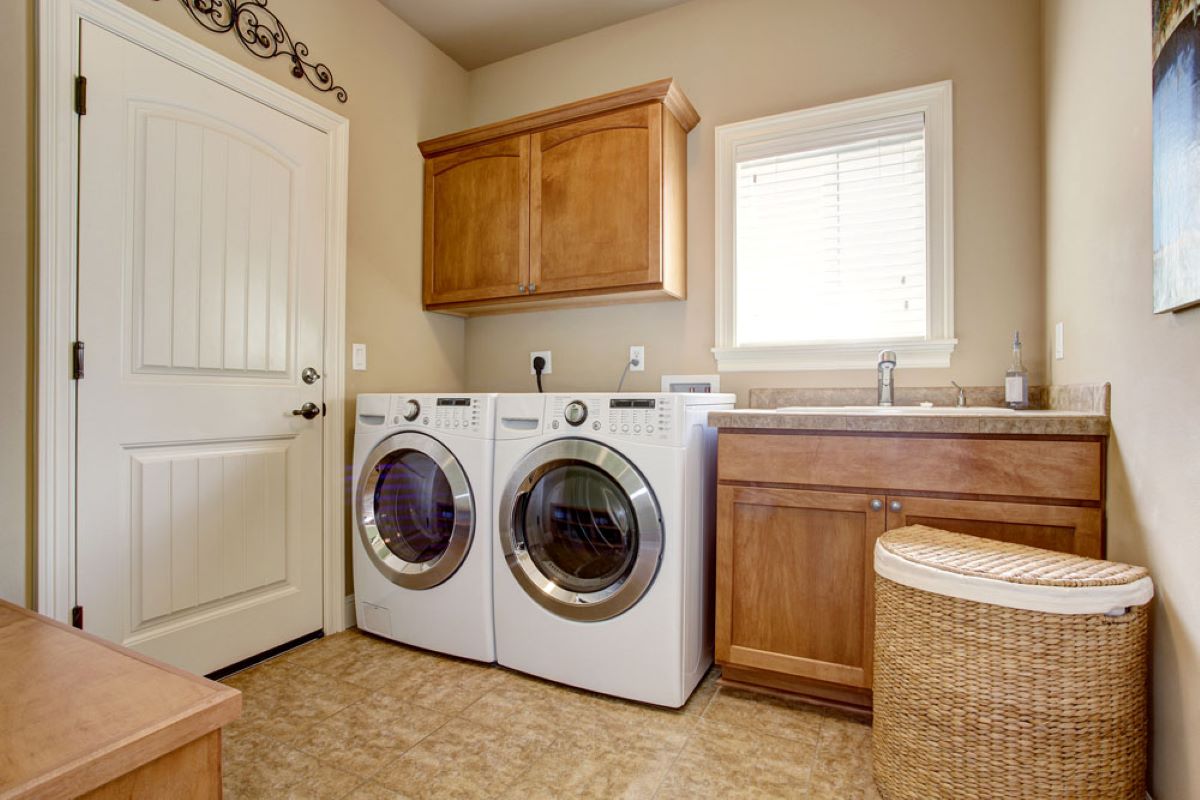
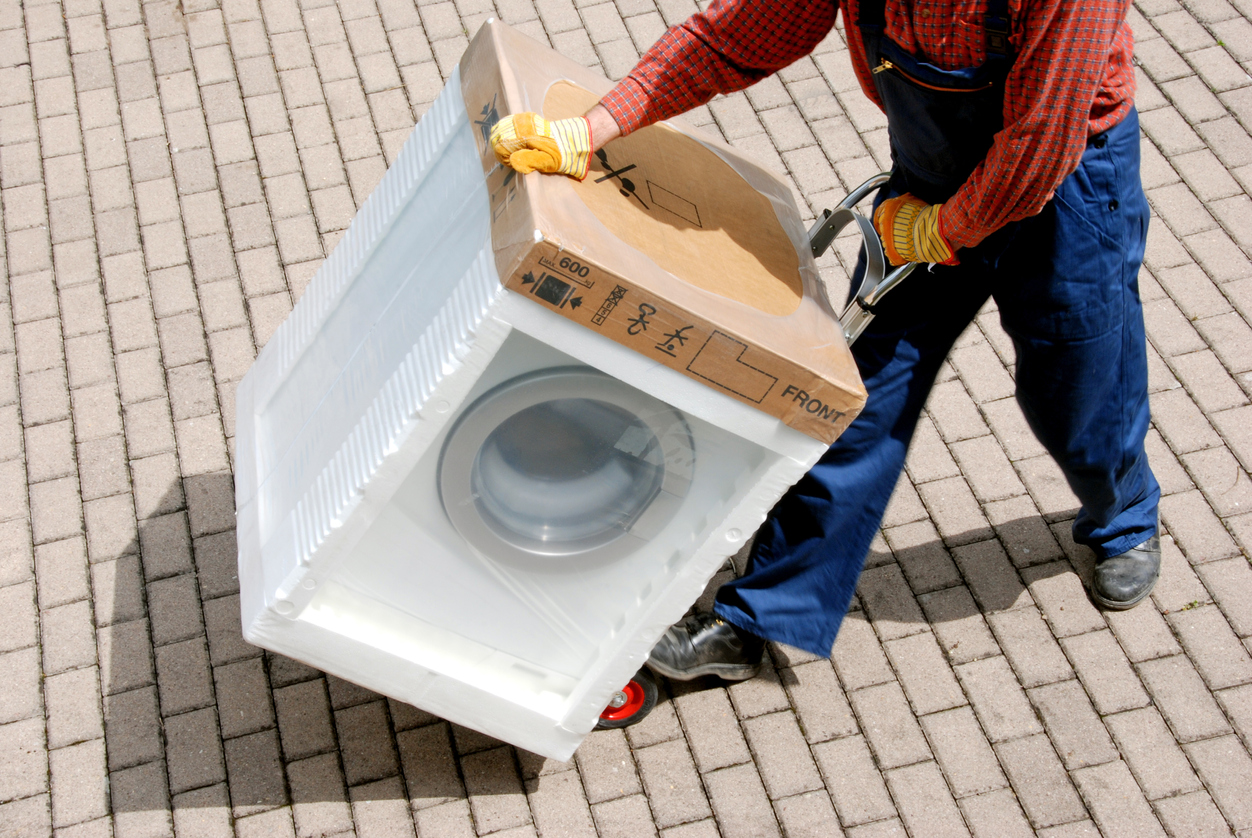
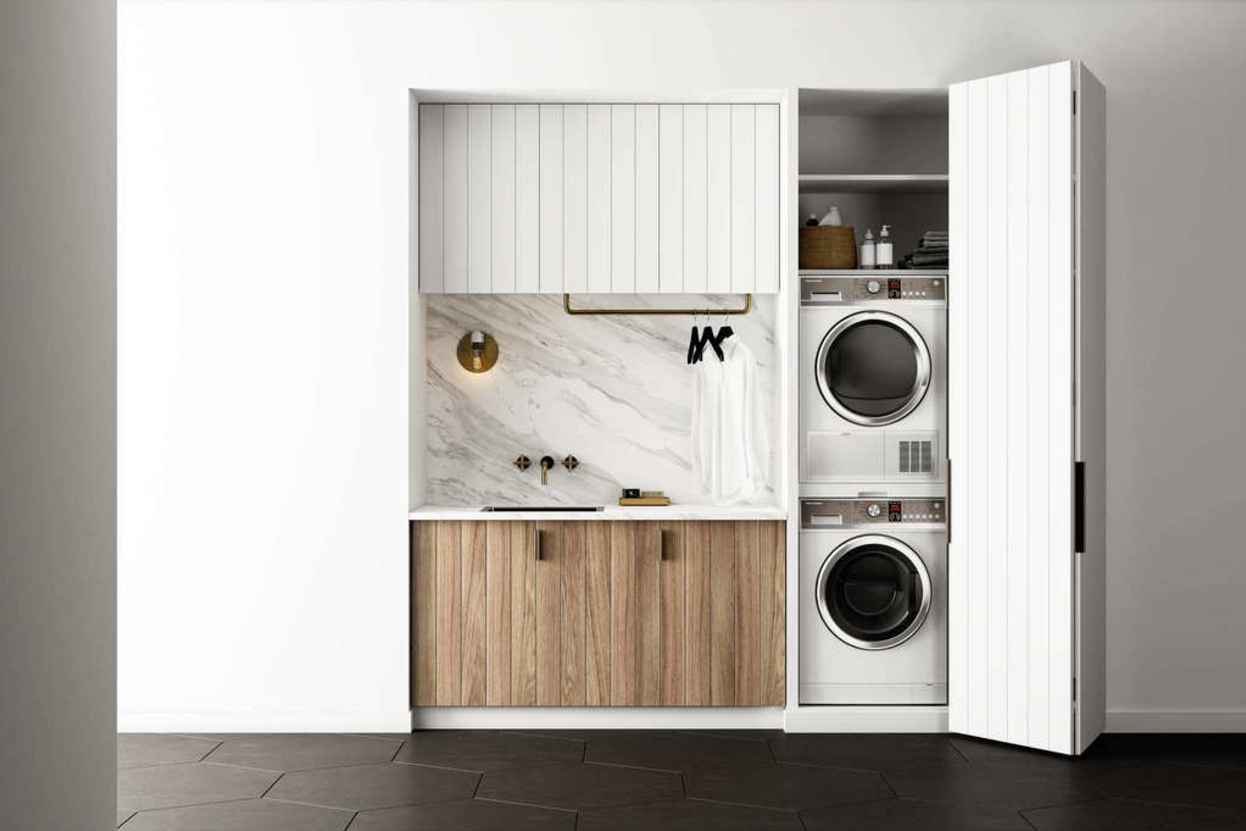



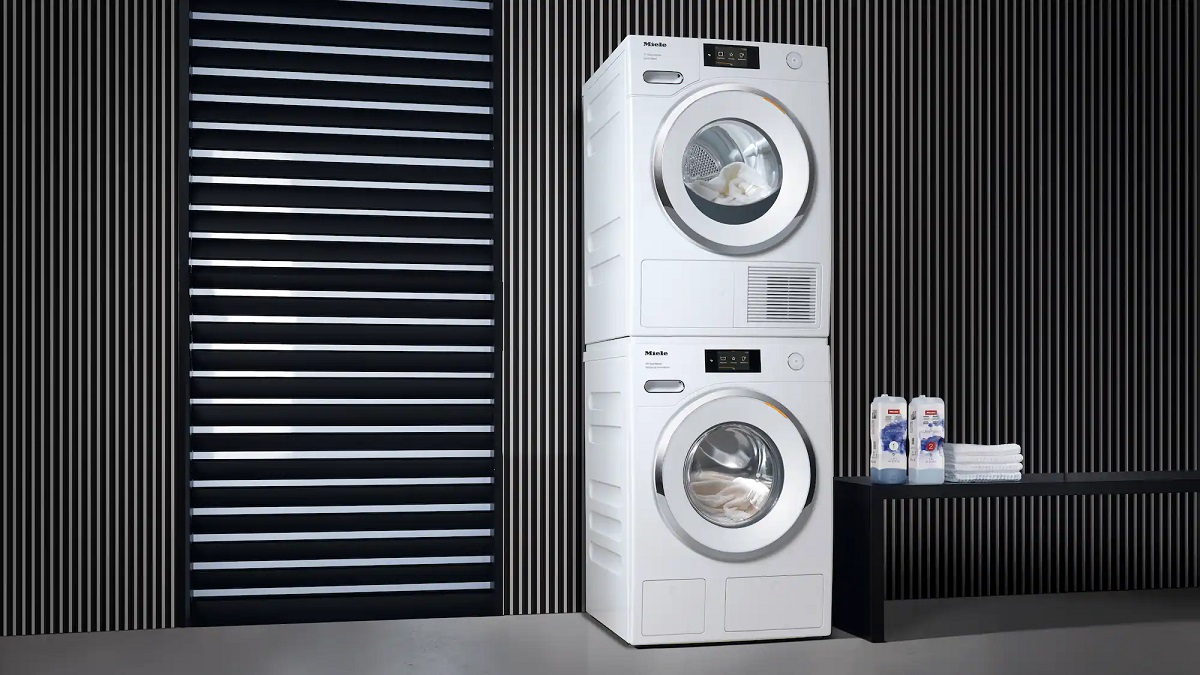
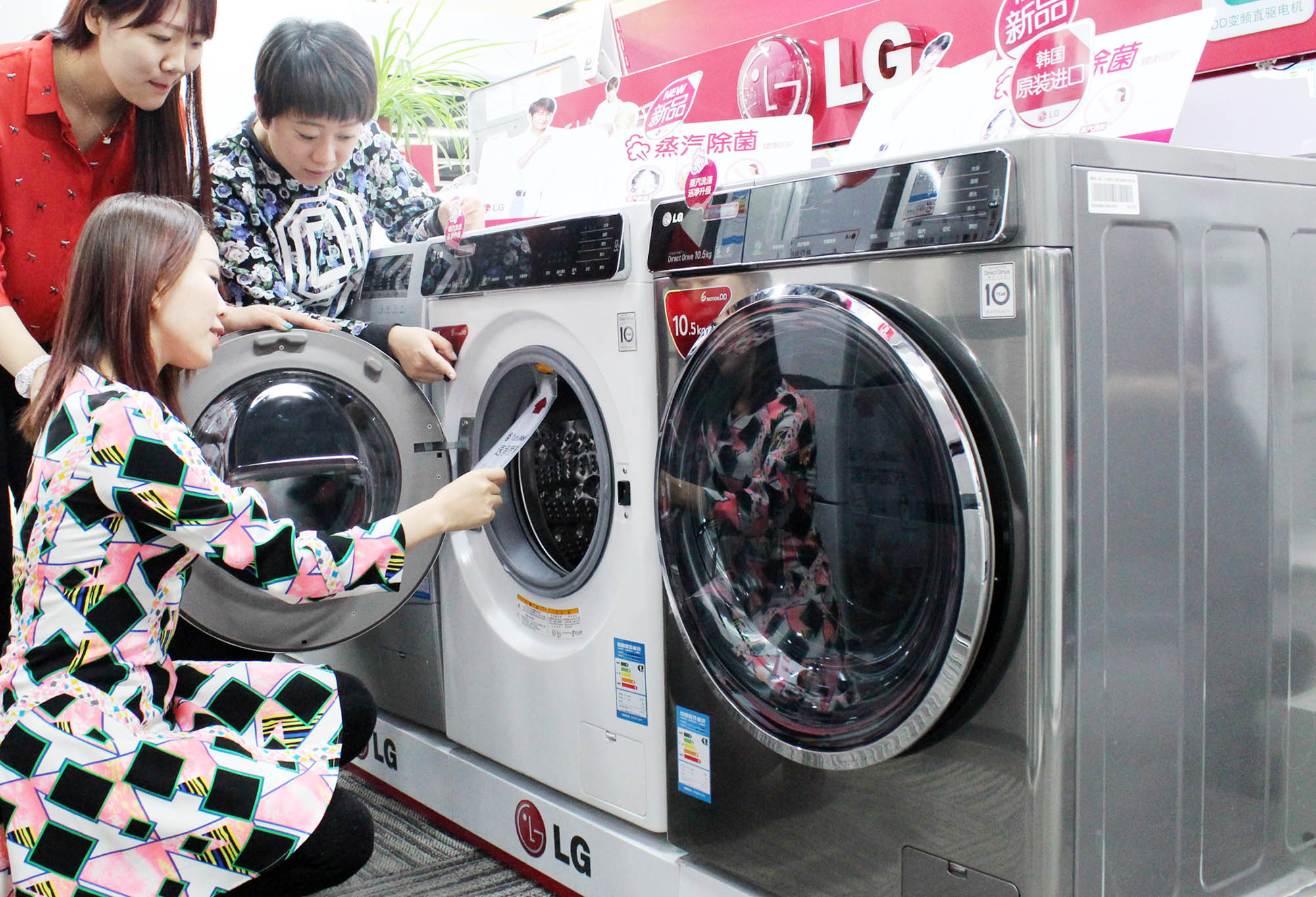
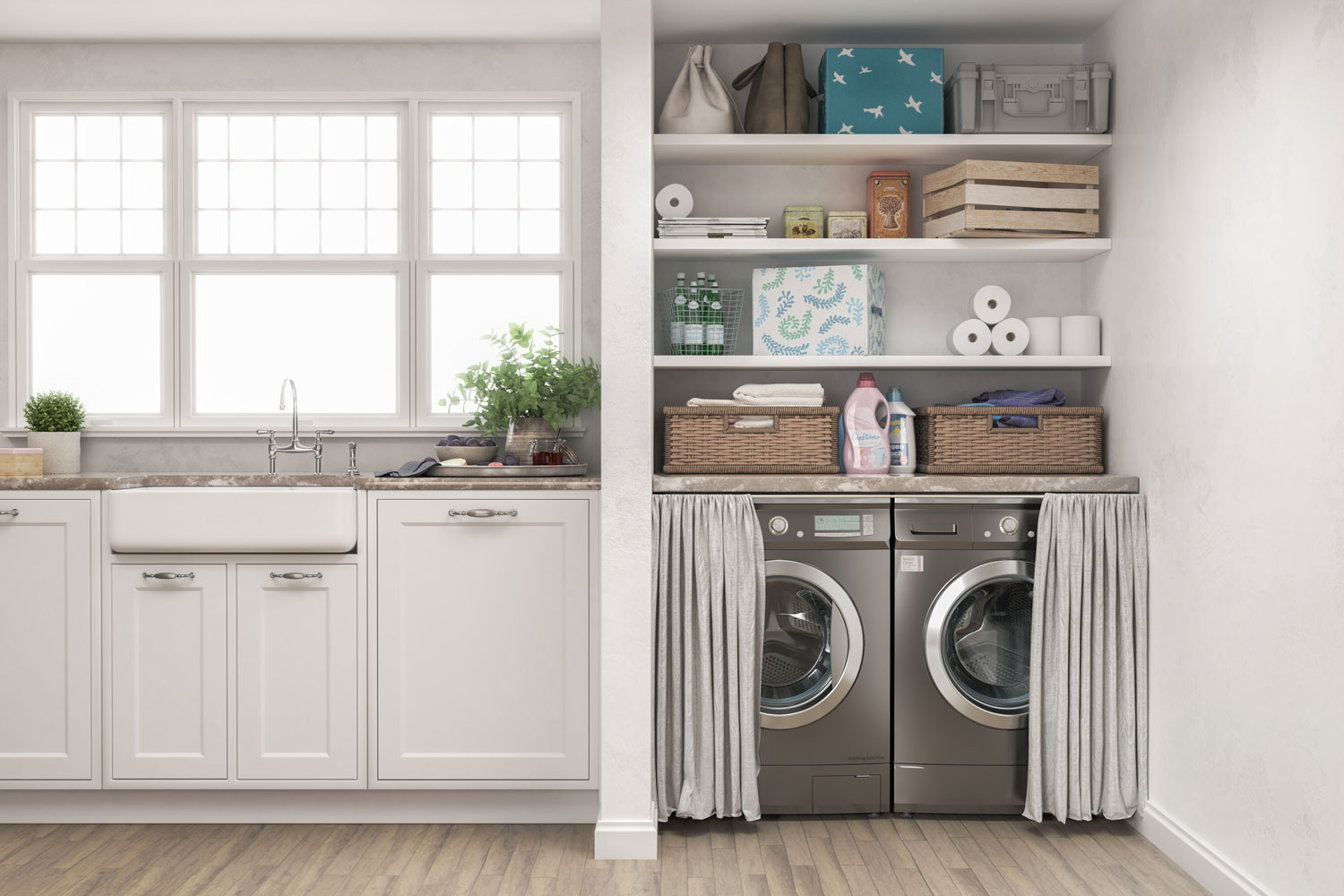
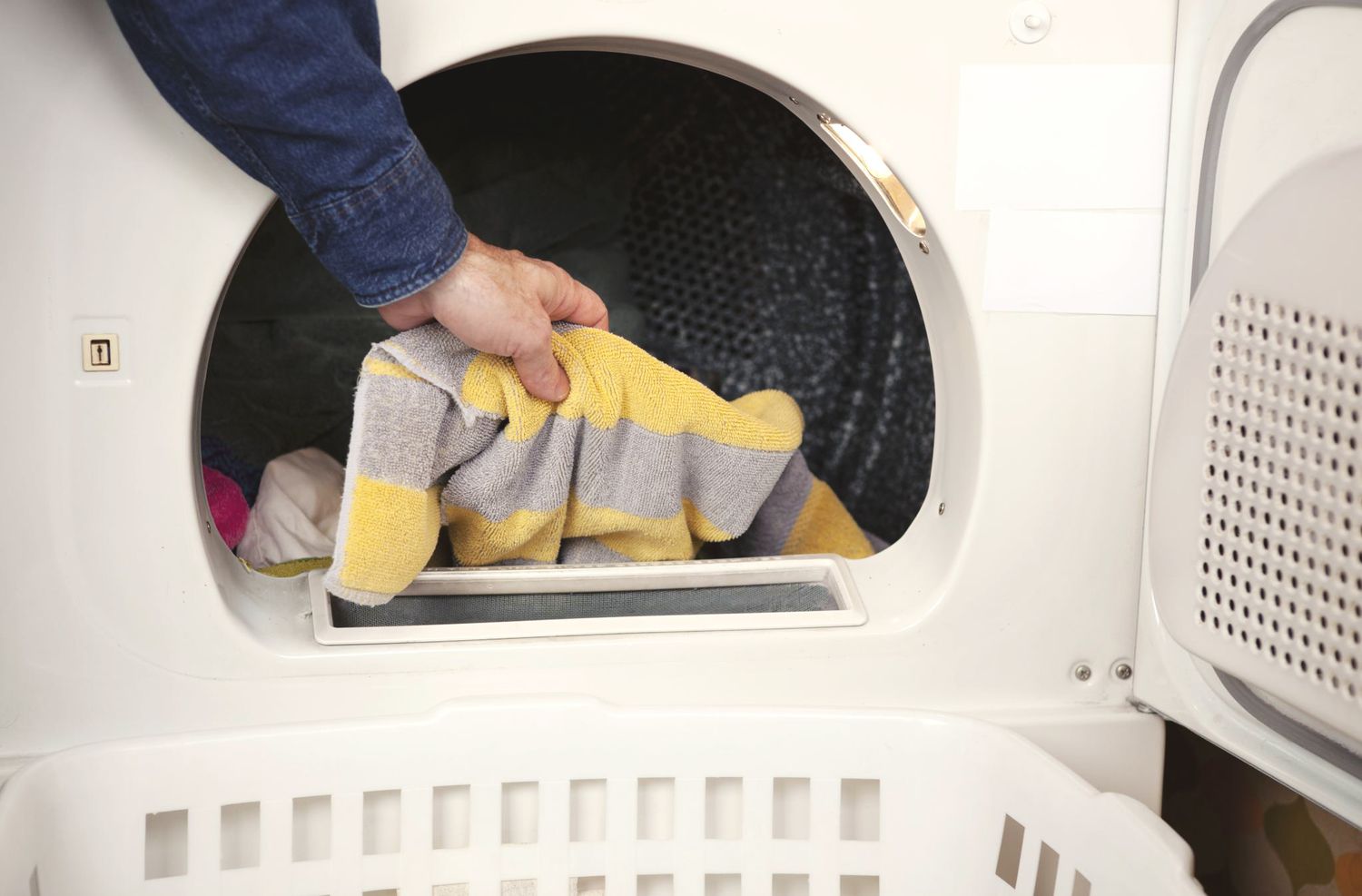
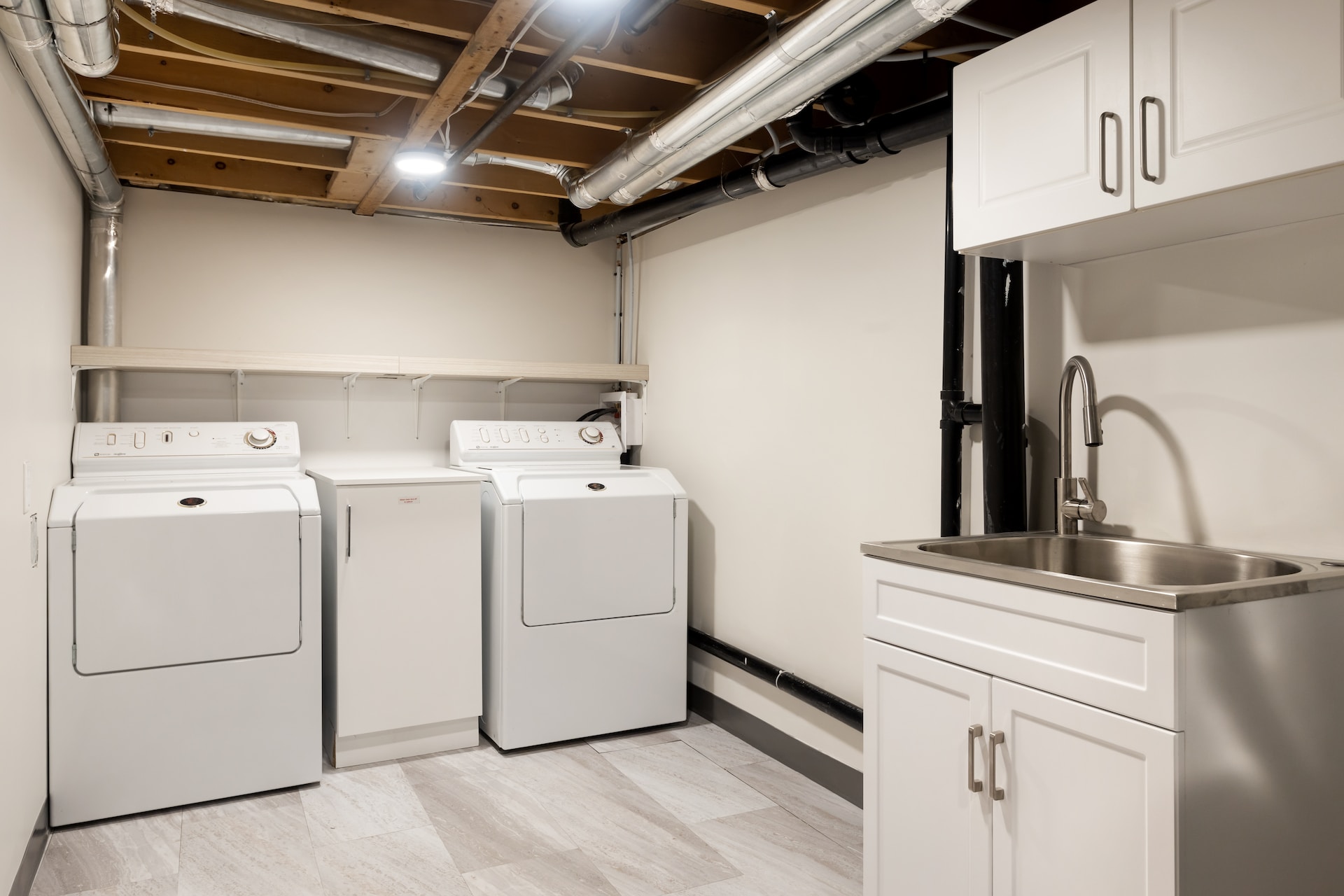
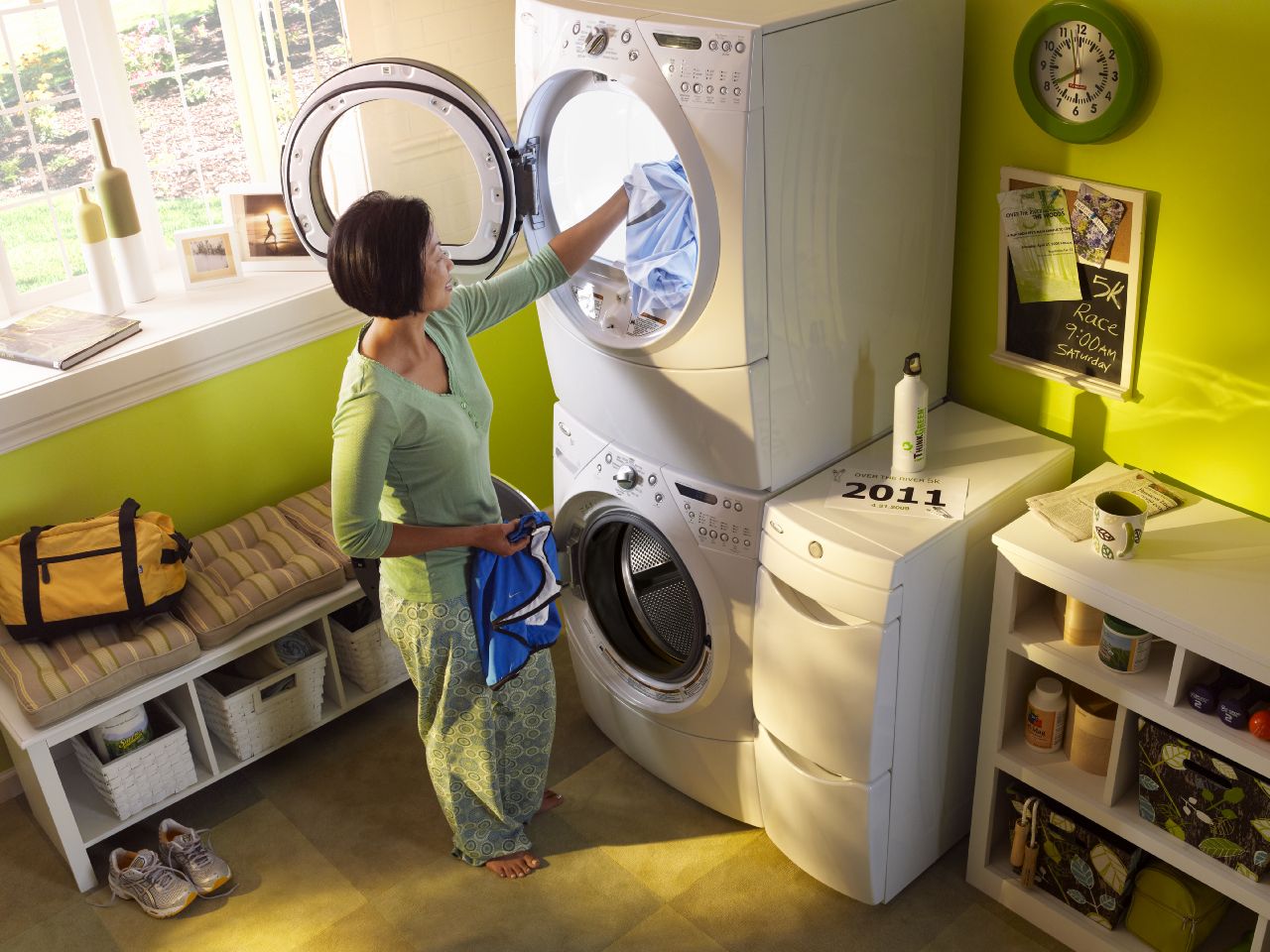

0 thoughts on “How Tall Are Stackable Washer And Dryer”